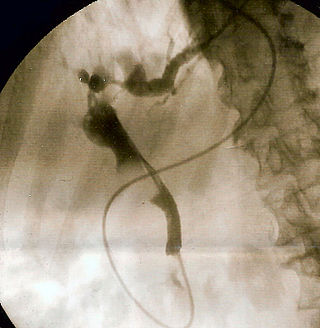A tort is a civil wrong, other than breach of contract, that causes a claimant to suffer loss or harm, resulting in legal liability for the person who commits the tortious act. Tort law can be contrasted with criminal law, which deals with criminal wrongs that are punishable by the state. While criminal law aims to punish individuals who commit crimes, tort law aims to compensate individuals who suffer harm as a result of the actions of others. Some wrongful acts, such as assault and battery, can result in both a civil lawsuit and a criminal prosecution in countries where the civil and criminal legal systems are separate. Tort law may also be contrasted with contract law, which provides civil remedies after breach of a duty that arises from a contract. Obligations in both tort and criminal law are more fundamental and are imposed regardless of whether the parties have a contract.
The mineral asbestos is subject to a wide range of laws and regulations that relate to its production and use, including mining, manufacturing, use and disposal. Injuries attributed to asbestos have resulted in both workers' compensation claims and injury litigation. Health problems attributed to asbestos include asbestosis, mesothelioma, lung cancer, and diffuse pleural thickening.

English tort law concerns the compensation for harm to people's rights to health and safety, a clean environment, property, their economic interests, or their reputations. A "tort" is a wrong in civil law, rather than criminal law, that usually requires a payment of money to make up for damage that is caused. Alongside contracts and unjust enrichment, tort law is usually seen as forming one of the three main pillars of the law of obligations.
Negligence in employment encompasses several causes of action in tort law that arise where an employer is held liable for the tortious acts of an employee because that employer was negligent in providing the employee with the ability to engage in a particular act. Four basic causes of action may arise from such a scenario: negligent hiring, negligent retention, negligent supervision and negligent training. While negligence in employment may overlap with negligent entrustment and vicarious liability, the concepts are distinct grounds of liability. The doctrine that an employer is liable for torts committed by employees within the scope of their employment is called respondeat superior.
Economic torts, which are also called business torts, are torts that provide the common law rules on liability which arise out of business transactions such as interference with economic or business relationships and are likely to involve pure economic loss.

Home Office v Dorset Yacht Co Ltd[1970] UKHL 2, [1970] AC 1004 is a leading case in English tort law. It is a House of Lords decision on negligence and marked the start of a rapid expansion in the scope of negligence in the United Kingdom by widening the circumstances in which a court was likely to find a duty of care. The case also addressed the liability of government bodies, a person's liability for the acts of third parties that he has facilitated, and liability for omissions.
Causation in English law concerns the legal tests of remoteness, causation and foreseeability in the tort of negligence. It is also relevant for English criminal law and English contract law.
Breaking the chain refers in English law to the idea that causal connections are deemed to finish. Even if the defendant can be shown to have acted negligently, there will be no liability if some new intervening act breaks the chain of causation between that negligence and the loss or damage sustained by the claimant.
McGhee v National Coal Board [1972] UKHL 7, 1 W.L.R. 1, is a leading tort case decided by the House of Lords. The Lords held that where a breach of duty has a material effect on the likelihood of injury then the subsequent injury will be said to have been caused by the breach. This approach was taken to resolve injustice arising from the orthodox 'but for' test for factual causation. Otherwise, under the 'but for' test, multiple potential causes of harm would hold equal causal weighting, making it impossible to establish a greater than 50% probability of one cause.

The Compensation Act 2006 is an Act of the Parliament of the United Kingdom, introduced in response to concerns about a growing compensation culture but conversely to ensure that the public received dependable service from claims management companies. In introducing the Bill, Baroness Ashton said that it was intended "to tackle perceptions that can lead to a disproportionate fear of litigation and risk averse behaviour; to find ways to discourage and resist bad claims; and to improve the system for those with a valid claim for compensation."
Misfeasance in public office is a cause of action in the civil courts of England and Wales and certain Commonwealth countries. It is an action against the holder of a public office, alleging in essence that the office-holder has misused or abused their power. The tort can be traced back to 1703 when Chief Justice Sir John Holt decided that a landowner could sue a police constable who deprived him of his right to vote. The tort was revived in 1985 when it was used so that French turkey producers could sue the Ministry of Agriculture over a dispute that harmed their sales.

Fairchild v Glenhaven Funeral Services Ltd [2002] UKHL 22 is a leading case on causation in English tort law. It concerned malignant mesothelioma, a deadly disease caused by breathing asbestos fibres. The House of Lords approved the test of "materially increasing risk" of harm, as a deviation in some circumstances from the ordinary "balance of probabilities" test under the "but for" standard.

Bailey v Ministry of Defence [2008] EWCA Civ 883 is an English tort law case. It concerns the problematic question of factual causation, and the interplay of the "but for" test and its relaxation through a "material contribution" test.

Williams v Natural Life Health Foods Ltd[1998] UKHL 17 is an important English tort law, company law and contract law case. It held that for there to be an effective assumption of responsibility, there must be some direct or indirect conveyance that a director had done so, and that a claimant had relied on the information. Otherwise only a company itself, as a separate legal person, would be liable for negligent information.
Vicarious liability in English law is a doctrine of English tort law that imposes strict liability on employers for the wrongdoings of their employees. Generally, an employer will be held liable for any tort committed while an employee is conducting their duties. This liability has expanded in recent years following the decision in Lister v Hesley Hall Ltd to better cover intentional torts, such as sexual assault and deceit. Historically, it was held that most intentional wrongdoings were not in the course of ordinary employment, but recent case law suggests that where an action is closely connected with an employee's duties, an employer can be found vicariously liable. The leading case is now the Supreme Court decision in Catholic Child Welfare Society v Institute of the Brothers of the Christian Schools, which emphasised the concept of "enterprise risk".

Lister v Hesley Hall Ltd [2001] UKHL 22 is an English tort law case, creating a new precedent for finding where an employer is vicariously liable for the torts of their employees. Prior to this decision, it had been found that sexual abuse by employees of others could not be seen as in the course of their employment, precluding recovery from the employer. The majority of the House of Lords however overruled the Court of Appeal, and these earlier decisions, establishing that the "relative closeness" connecting the tort and the nature of an individual's employment established liability.

Majrowski v Guy's and St Thomas' NHS Trust [2006] UKHL 34 is a UK labour law case holding that an employer will be vicariously liable for the harassment of an employee by another.

The floodgates principle, or the floodgates argument, is a legal principle which is sometimes applied by judges to restrict or limit the right to make claims for damages because of a concern that permitting a claimant to recover in such situations might open the metaphorical "floodgates" to large numbers of claims and lawsuits. The principle is most frequently cited in common law jurisdictions, and in English tort law in particular.
Doughty v Turner Manufacturing is a 1964 English case on the law of negligence.
Catholic Child Welfare Society v Institute of the Brothers of the Christian Schools [2012] UKSC 56 is an English tort law case, concerning vicarious liability.










